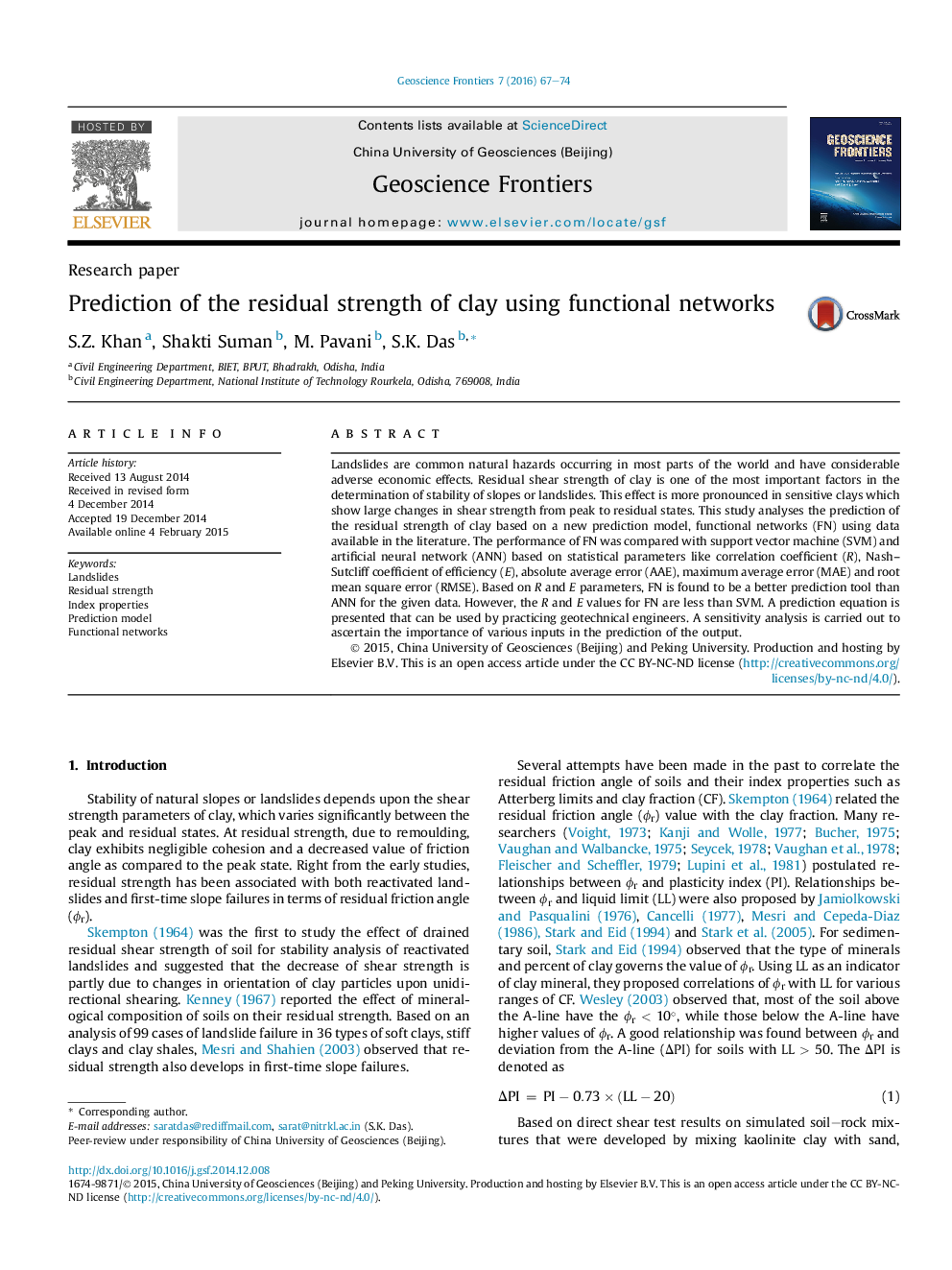| کد مقاله | کد نشریه | سال انتشار | مقاله انگلیسی | نسخه تمام متن |
|---|---|---|---|---|
| 4681524 | 1348855 | 2016 | 8 صفحه PDF | دانلود رایگان |
• This study analyses the prediction of the residual strength of clays based on a new prediction model, functional networks.
• The performance of the functional network was compared with support vector machine and artificial neural network.
• Functional network outperformed support vector machine and artificial neural network in terms of statistical performances.
Landslides are common natural hazards occurring in most parts of the world and have considerable adverse economic effects. Residual shear strength of clay is one of the most important factors in the determination of stability of slopes or landslides. This effect is more pronounced in sensitive clays which show large changes in shear strength from peak to residual states. This study analyses the prediction of the residual strength of clay based on a new prediction model, functional networks (FN) using data available in the literature. The performance of FN was compared with support vector machine (SVM) and artificial neural network (ANN) based on statistical parameters like correlation coefficient (R), Nash--Sutcliff coefficient of efficiency (E), absolute average error (AAE), maximum average error (MAE) and root mean square error (RMSE). Based on R and E parameters, FN is found to be a better prediction tool than ANN for the given data. However, the R and E values for FN are less than SVM. A prediction equation is presented that can be used by practicing geotechnical engineers. A sensitivity analysis is carried out to ascertain the importance of various inputs in the prediction of the output.
Figure optionsDownload as PowerPoint slide
Journal: Geoscience Frontiers - Volume 7, Issue 1, January 2016, Pages 67–74
